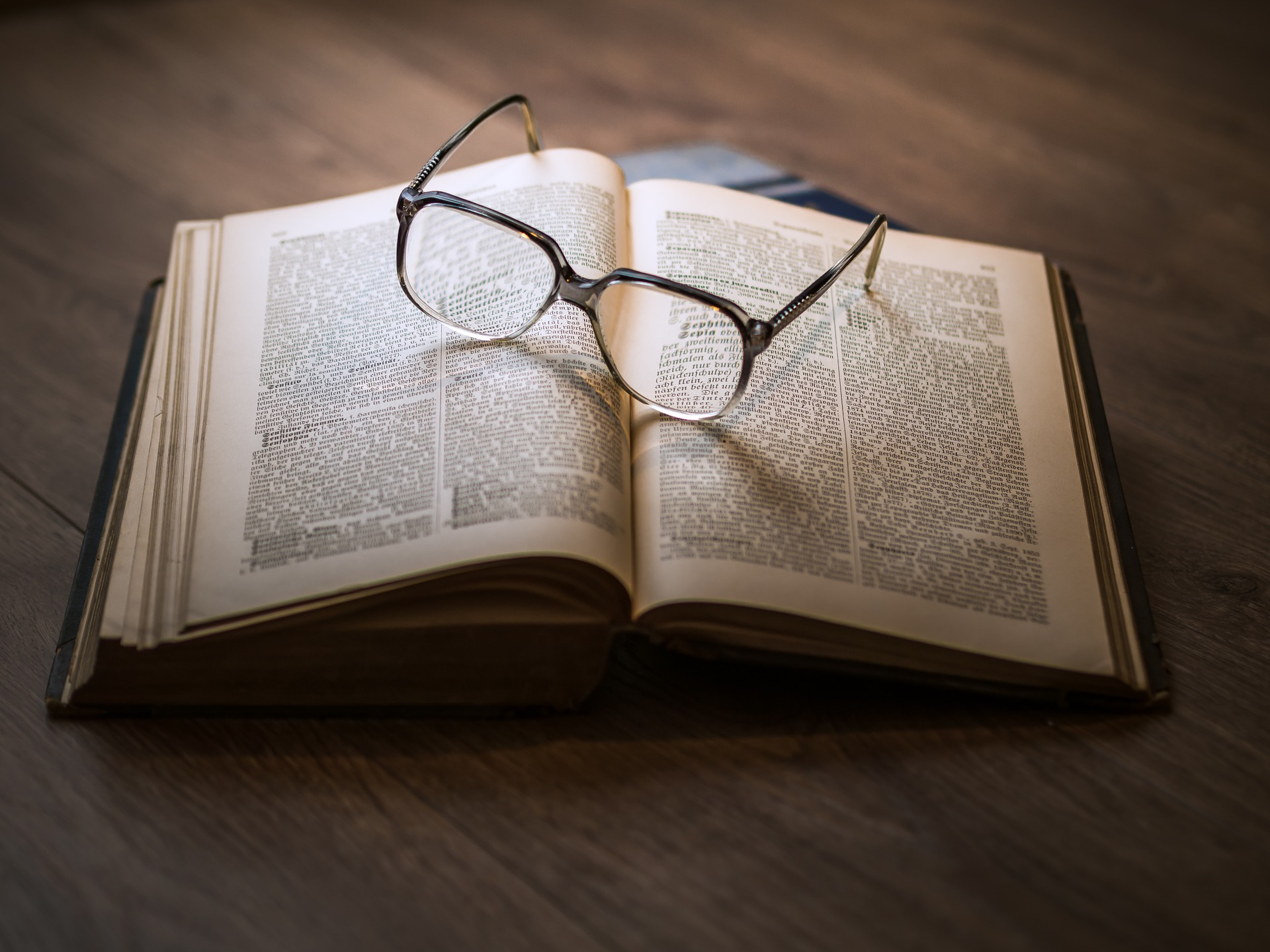
What Women Want: Trends in Female Fiction, 2016
Monday, October 10th, 2016
By Charlotte Holloway
Trends are fickle things. What sells one year almost certainly won’t sell the next. Genres come and go – sub-genres even more so – and trying to predict them is almost impossible. Think about the success of 50 Shades of Grey. Back in January 2012 did anyone remember erotica still existed? Did anyone think it would sell? Then came April 2012 and the launch of EL James’ trilogy and suddenly erotica was all anyone wanted to read. Publishers revamped long forgotten sagas. Authors that were previously spoken about only in hushed tones were suddenly brought out and forced on book tours.
As I said, trends are fickle things, but if you want to write a bestseller, then you need to know what’s selling and jump on that wagon fast. Or, you write something utterly different and become a trendsetter. Either way, here are your current trends in women’s commercial fiction.
Tough Fiction
Perhaps as a reaction to austerity, female readers have been looking towards more introspective themes than usual. Tough subjects and strong messages are key in this genre trend, but perhaps what is more important is the punchy writing and the deep unhappiness presented through the characters. Readers want to follow the drama and be moved by the character’s journey. They want hope for the future in their fiction as much as they want it in their own lives.
The movement began some time ago with such authors as Jojo Moyes and David Nicholls, but it has grown with each passing year. Last year saw the word of mouth success The Shock of the Fall take the publishing industry by storm and this year it is the turn of Shtum by Jem Lester (Orion, April 2016) and Feeding Time by Adam Biles (Galley Beggar Press, August 2016).
Moral Dilemmas
From introspection to a reflection on society, this genre observes the darkness in the world. It helps us commit to living and experiencing despite all the negative humanity has offered us: terrorism, floods, fires, famine, and plague to name but a few. This genre brings us haunting questions and memorable characters. Zero K by Don DeLillo (Picador, May 2016) is one such novel. Through icy writing and a dazzling plot, it discusses euthanasia and cryogenics. The Noise of Time by Julian Barnes (Jonathan Cape, January 2016) is another novel that published earlier this year in this genre. His first novel since The Sense of an Ending published in 2011, this book reimagines the life of Shostakovich, detailing the composer’s torturous relationship with the Soviet authorities. It is a carefully sculpted novel that questions the fundamentals of free speech and what art can achieve.
Psychological Thrillers
The appeal of this genre lies in the suspense: the building menace from unreliable narrators and unpredictable characters keep the reader turning page after page. These novels allow the reader to peek behind the curtain into the complex psychological worlds that are marriages and friendships. They give the reader something to discuss when finished and gossiping readers create a good market for a book.
Paula Hawkins had phenomenal success last year with her psychological thriller The Girl on the Train but all she did was fill a gap created in the market by Gillian Flynn’s Gone Girl the year before. This year’s big success in this genre has been Behind Closed Doors by B.A. Paris (Harlequin, February 2016) but The Widow, a debut by Fiona Barton (Bantam Press, September 2016), is also tipped to do extremely well.
Historical
The success of TV shows such as Downton Abbey show how this genre just keeps on growing. Brought about perhaps by the speed with which the tech industry is progressing, readers want to be taken back to a different time when things were slower. They want rich, layered novels, often with multiple strands to the storyline. With several 100-year anniversaries of 1st World War battles taking place this year and the 70th anniversary of VJ day also taking place, the twentieth century offers rich pickings for good historical fiction. Devotion by Louisa Young (Borough Press, June 2016) is just one example. It portrays love and war in fascist Rome.
Readers want to be educated and this genre can do just that. A Quiet Life by Natasha Walter (Borough Press, June 2016) is inspired by Melinda Marling, the wife of Cambridge spy Donald Maclean. It’s a heart-stopping cold war thriller and a profound study of one woman’s struggle for survival.
Cutsey Cup Cake novels
This genre trend just never ends. It began with Jenny Colgan (who remains a key player) but the list of authors has widened to such names as Rosie Blake and Claire Dowling. These books are cosy and comforting at a time when so much is up in the air in real life. They are also always cheap on Kindle, so are perfect for summer holiday reading. This year’s must-have is Modern Lovers by Emma Straub (Michael Joseph, June 2016).
Adult colouring books
This is both an age- and gender-defying trend; men and women of all ages are buying colouring books in their droves. Last year, an estimated 12 million adult colouring books were sold in the US alone. Colouring book clubs are sprouting up across the globe and groups can be found on FaceBook and Instagram where members share not only their creations, but also their stories of healing. Colouring books are said to work like other mindfulness techniques such as yoga and meditation. The process of colouring has a grounding effect, slowing down the heart rate and respiration, loosening muscles, and stimulating the brain.
What this trend tells us though, is that any genre can come up at any time, blindsiding agents and making millions for savvy authors. So keep writing and keep reading because trendsetting comes from knowing your market.
(Posted by Cherry Mosteshar)

A reason to write
Tuesday, June 14th, 2016
By Charlotte Green
In his essay Why I write, George Orwell tells his readers that inside each writer there are four motivating factors. Every writer possesses all factors concurrently but to varying degrees. The factors are:
Sheer egoism
The desire to seem clever, to be talked about, to be remembered after death.
Aesthetic enthusiasm
The perception of beauty. Either of the external world or of the written word. A desire to share that beauty with others.
Historical impulse
A need to find and present the truth to leave it for posterity.
Political purpose
Here Orwell uses the word ‘political’ in the widest possible sense. For him it is the desire or need to push the world in a certain direction, to alter other peoples’ idea of the kind of society that they should strive after.
For Orwell the reason these factors vary lies not in the temperament or character of the author, but in the time in which he or she lives. Offering himself as an example, Orwell tells his reader that his own background forced his writing in the direction of politics, despite the first three factors affecting him more deeply. He writes:
Every line of serious work that I have written since 1936 has been written, directly or indirectly, against totalitarianism and for democratic socialism, as I understand it. It seems to me nonsense, in a period like our own, to think that one can avoid writing of such subjects.
Orwell goes on to say that for him, political writing became an art form in itself. He combined his need for aesthetic beauty, his desire to leave something of his current age to history, and his compulsion to speak out against totalitarianism, in order to enlighten society and force entire nations towards democracy. He writes:
What I have most wanted to do throughout the past ten years is to make political writing into an art. My starting point is always a feeling of partisanship, a sense of injustice. When I sit down to write a book, I do not say to myself, ‘I am going to produce a work of art’. I write it because there is some lie that I want to expose, some fact to which I want to draw attention, and my initial concern is to get a hearing. But I could not do the work of writing a book, or even a long magazine article, if it were not also an aesthetic experience.
For me, the key sentence here is if it were not also an aesthetic experience. It is Orwell’s desire to combine politics and art that makes his books last. I doubt that pamphlets on the latest EU referendum will make it into libraries or onto GCSE reading lists for years to come, but Orwell’s books will. In this age of digital publishing where it is so easy to get your views heard, is the aesthetic nature of writing still of importance? Or have ego and political purpose won out? In a time when every man, woman, or child with access to the internet can write a blog or tweet about current events instantly, has writing lost its creativity in favour of reporting news?
American short story writer Flannery O’Connor once wrote that the “financial rewards for sorry writing are much greater than those for good writing” and to be fair, she has a point. The nature of writing these days seems to be instant gratification rather than lasting beauty. I heard an author speak yesterday at my local library who told his audience with glee that he published six books a year and had sold over 2 million copies of his 61 books. Is that a good thing? Up until the year before her death, Harper Lee had only ever published one book and had remained silent on that fact her entire life, rarely consenting to give interviews. I imagine the man I met yesterday could only dream of her sales.
At the end of the day it is the world in which we live that dictates who and what we appreciate. It is a rare author indeed who can live by his pen, writing no longer paying what it did. But, for those few who have that rare quality, talent, I beg of you keep writing, and write beautifully, so that art may continue to breathe within your words.

Self-Distrust: The Killer of Creativity
Tuesday, June 14th, 2016
By Charlotte Green
Ted Solotaroff, editor of the New American Review, once wrote that rejection is as much a part of a writer’s life as snow and cold are of an Eskimo’s. He’s right. If the British Library’s new online collection Discovering Literature shows us anything, it is that even the greatest writers are rejected. TS Elliot once rejected George Orwell’s Animal Farm, writing that it needed ‘more public-spirited pigs’.
To an inexperienced writer, a year or two of regular rejection letters can lead to what is known as self-distrust, that is a lack of self confidence; an inability to trust your writing and editing skills; a lack of faith in the writing process. Essentially, those writers who suffer from self-distrust will not allow themselves to write badly.
In any other profession it would be expected that the early stages of a task would be messy, so why do writers expect beautiful prose from the outset? Ernest Hemingway’s famous line The first draft is always shit is pinned to most writer’s corkboards, but why do so few believe it? It is because on finishing their first draft, the inexperienced writer moves immediately from creating to judging. They do not allow time to edit. Instead, they read and judge, inevitably feeling disheartened and eventually pressing delete, rejecting every word they have written. If they do value something of their work, enough to send it out to an agent, the inevitable rejection letter only leads to an added sense of self-distrust. For those writers, self distrust becomes so crippling that it leads to anxiety and depression. From there the writer becomes defensive and rather than being excited come a writing session, they are instead afraid of the blank, white computer screen, seeing in it a reflection of their own limitations. After a time they won’t switch their computer on at all.
Experienced writers learn to separate the rejection of their writing and the rejection of themselves. They don’t allow criticism of the work to turn into self-criticism or self-distrust. In fact they use it. The anger and disappointment they feel at each rejection letter becomes a source of energy, forcing them on to improve their writing. They use their sorrow and self pity to improve their sense of empathy, deepening their character portrayals. And that wounded innocence they now possess? They convert it into irony, adding an element of tragi-comedy to their prose.
It is no exaggeration that how a writer copes with rejection determines whether or not they will go on to have a successful writing career. Rejection can so easily be turned into self-hatred. The best defence, therefore, is self-objectivity, an interest in the outside world, and a faith in the process. Write on. Write through the all-consuming doubts. And use that rejection to power yourself forwards towards your ultimate goal: the writing of perfection.

Charlotte Green: On Writing and Motherhood
Sunday, May 29th, 2016
On Writing and Motherhood
In his essay Fires, Raymond Carver writes that, of everything, the greatest influences on his writing have been his children. Not because of who they are or what they meant to him, but because of the “unrelieved responsibility and permanent distraction” they have caused him over the years. In effect, they stopped him writing. If he was unable to sit down and write, they were most often the reason why. His essay continues, “I understood writers to be people who didn’t spend… every waking hour subject to the needs and caprices of their children. Sure, sure, there’ve been plenty of writers who have had far more serious impediments to their work, including imprisonment, blindness, the threat of torture or of death in one form or another. But knowing this was no consolation…. I could see nothing ahead but years more of this kind of responsibility and perplexity. Things would change some, but they were never really going to get better. I understood this, but could I live with it? At that moment I saw accommodations would have to be made. The sights would have to be lowered. “
A rather bleak sentiment for one of America’s best short story writers.
In July 2015 I became a new mum. Like Carver, all I had ever wanted to be was a writer and a parent and suddenly I was balancing both. Or rather, not balancing both. Being a parent is all consuming. As Carver said, children are an “unrelieved responsibility and permanent distraction”. For the first eight months of my daughter’s life I wrote nothing. Not a single word. No short stories, no writing exercises, not even a diary. Prior to maternity leave I had, rather naively, imagined my year ‘off’ as being blissfully filled with milky cuddles, reading stories, dressing my daughter up and of course there would be hours when she would sleep soundly and I would be able to rework the first draft of my novel and send it out to agents. Hah.
Eight months in and things are getting easier. I’m writing this for a start. But I can see Carver’s point. Things are unlikely to change much and I need to adjust my expectations, refocus my energies and ideas into something realistic. For Carver that was writing short stories. He could only snatch an hour at a time so he would use that hour to write a short story and the subsequent hours he found that week would be used for editing. And it worked. Raymond Carver is considered to be one of the best short story writers of the twentieth century. But it took hard work and dedication. He had to want it bad. To find the time between work and parenthood and to choose to write above everything else, that takes serious commitment.
One thing having my daughter has taught me is that I too want it bad. It’s not just about the escape, having a break from the responsibility of being a mother; it is about creating something that is uniquely mine. It is about achieving something for myself outside of growing a human (and then keeping it alive). Not only that, but in the years to come, when she is looking towards adulthood and thinking about her own life choices, I want her to respect mine, to know that she can achieve any goal she sets herself because she watched her own mother achieve hers.
So in answer to Carver’s question: can I live with it? Yes, I can. I understand that accommodations will have to be made, but I don’t agree that my sights will have to be lowered. Perhaps deadlines extended and priorities adjusted, but for my daughter’s future respect, I will achieve every damn goal going. She maybe the reason I get up in the morning, but my own personal goals are the reason I make it through to the end of the day.

Charlotte Green: What is a story?
Sunday, May 29th, 2016
What is a story?
To tell a story, American short story writer Flannery O’Connor once wrote, is “to create life with words”. It takes a supreme talent to write a story that can recreate life, but is that really the goal of any story? Do people not immerse themselves in fiction for the sole purpose of escaping real life? And if that is the case, then what is a story?
If you ask anyone, writer or no, to tell you what a story is, they will know. Most people have been reading and telling stories since childhood. But if you ask someone to actually sit down and write one, the task can prove somewhat challenging. People become obsessed with plot and structure, characterization, and meaning. Do those things make up a story? Or are they the art of telling a story? If they are the techniques, then what is a story? And what differentiates a good story from its mediocre counterparts?
For the novice writer, early stories are often mongrel things. Combinations of sketch and essay, editorial and character study, case history and parable. They are often about problems rather than people. Abstract issues rather than concrete situations. Beginning writers are somehow possessed less by the story than by what O’Connor calls “unfleshed ideas and emotions”. They are so desperate to pass on to the world an idea or feeling – or even what they see as their own wisdom – that they fail to tell a story in the process.
So what is a story? Put simply, in a story something happens. There is a character and he is driven towards an action, usually by outside forces. The story is the showing of that action. It can be told through different mediums (short story, flash fiction, novel, novella, screenplay, or script) but the essence is always the same: there is a character or characters and they are forced to act. In other words, a story is a dramatic unit of literary art.
At their core, stories are about human existence, about real life, what Raymond Carver called “common place things”. In order to write about human experience, the writer must begin with the human element: the protagonists, in particular their senses. Fiction deals with reality through what can be seen, heard, smelt, tasted, and touched and it often takes at least three of these to make an object come to life. Take this sentence from Flaubert’s Madame Bovary where Emma plays the piano and Charles sits watching:
She struck the notes with aplomb and ran from top to bottom of the keyboard without a break. Thus shaken up, the old instrument, whose strings buzzed, could be heard at the other end of the village when the window was open, and often the bailiff’s clerk, passing along the highroad, bareheaded and in list slippers, stopped to listen, his sheet of paper in his hand.
At the start of this sentence we are with Emma at the piano “whose strings buzzed”. At the end we are across the village with a clerk in his list slippers. Given what happens to Emma by the end of the novel, the reader would be forgiven for wondering why these details are important. But Flaubert had to create a realistic and believable village for Emma to live in. For if the reader didn’t believe her surroundings, why would he believe her outcome? It is this level of detail that makes the village and thereafter her outcome believable. It is what makes the story believable.
Detail is essential. Ford Maddox Ford famously taught his students that a writer should not include a man in a story long enough to sell a newspaper, unless he appears with enough detail to make the reader see him. How does a writer achieve that? By writing what he sees. Learn to see – not just look – but really see the world. Writing fiction is not a matter of saying things to the reader, but of showing them the world as it really is.
That said, art is selective. A story should not be a piling up of details. Every detail must work hard to be there. It must be essential to the action of the story. Otherwise that story becomes cumbersome and suddenly the reader no longer believes.
It is this level of detail that turns a mediocre story into a good story. A truly excellent story, however, is one where the reader discovers something new each time he reads it. In order to achieve this, the story must operate on several levels. A meaning or several meanings must be incorporated into the story. They are not tagged onto the end, but embedded into the very heart of the story. By doing that morality and drama are combined. The characters illustrate the story’s meaning through their actions.
And so we have come full circle. If a story is a character driven to action and that action illustrates a moral or meaning. Then through that story the author has offered up the original idea they wished to impart on their reader. And if beliefs are the lights by which we see, then by simply detailing the world as it appears, the writer will be incorporating his morals into his writing. It is through the human eye that writers make judgements and by using his vision, a writer not only details the world as it appears to him, but makes moral judgements on what he sees. Those judgements become the morals embedded in any story.
It takes true talent to “create life with words”. But by writing only what we see and by practicing each and every day – that is to make art a habit – we can almost certainly come close.






